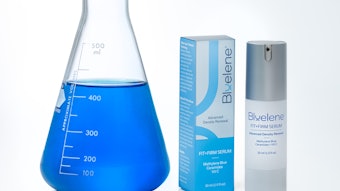The U.S. demand for cosmeceutical products is expected to increase 5.8% per annum to $8.5 billion in 2015, driven by an aging populace seeking to maintain the appearance of youth, reports The Freedonia Group, Inc. in its new Cosmeceuticals study.
The target market for cosmeceuticals continues to expand beyond the traditional 45 and older demographic to include much younger individuals, as the national obsession with youth continues and focus shifts to products intended to stave off the first signs of aging. Growing pricing pressures due to the expanding market penetration of private label brands and the rapid commoditization of innovative ingredients and products limits further gains. Additionally, cosmeceuticals face intense competition from alternative treatments (e.g., cosmetic surgery), states the Cleveland-based industry market research firm.
The chemicals used in cosmeceutical products provide a competitive advantage by which brand owners differentiate their products. Gains will be spurred by the use of new, value-added active ingredients in product formulations. Antioxidants will remain the largest category, with above-average gains promoted by their incorporation into both topical and ingestible formulations. Also, botanicals will continue to see the fastest gains in demand as consumers continue to desire “natural” products.
Injectables and skin care products will experience the fastest growth, based on anti-aging benefits. Brands such as Allergan’s Botox Cosmetic and Juvéderm have essentially been synonymous with injectables since their introduction, and they will continue to lead growth going forward. The first direct competition to Botox emerged in 2009 with the U. S. Food and Drug Administration’s approval of Dysport, which will help to reshape the injectables market. Relatively recently introduced hyaluronic acid-based dermal fillers will also see particularly fast growth.
In addition to achieving above-average growth, skin care products will remain the largest product category, set to account for 64% of all cosmeceutical product demand in 2015. Age-defying products will achieve the fastest gains in the segment, driven by a highly receptive, expanding group of graying baby boomers who want to redress visible damage to the skin caused by aging, ultraviolet radiation and other environmental stressors, as well as a growing number of younger individuals seeking to prevent signs of aging.










